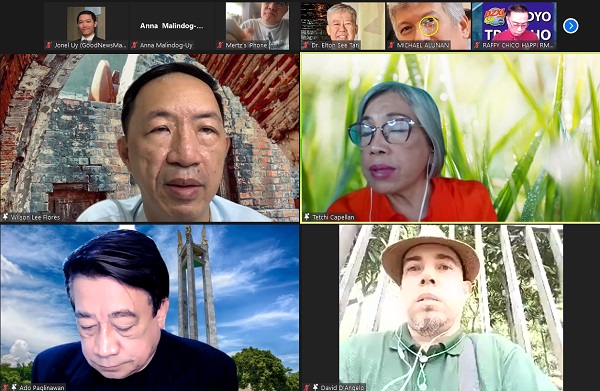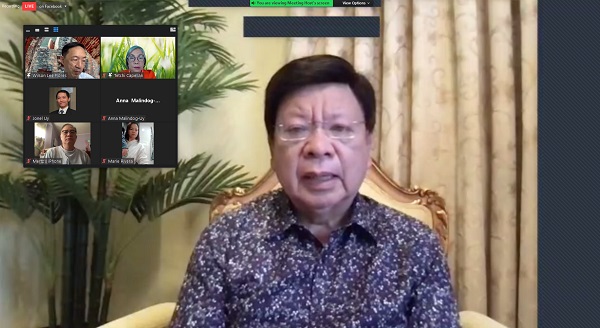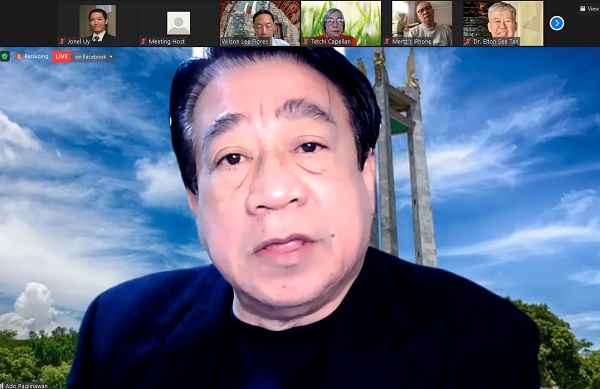In a recent online public forum entitled “Monopolistic Control of Power Supply in the Philippines and its Negative Impact on Consumers,” speakers Cong. Rodante D. Marcoleta of SAGIP Party-List and Ms. Tetchi Capellan, Chairman of the Philippines Solar and Storage Energy Alliance Inc. (PSSEA), shared their insights on the matter. Industry opinion personalities Adolfo “Ka-Ado” Paglinawan and senatoriable David D’ Angelo also chimed in on the subject, as moderated by Wilson Lee Flores.
The “Pandesal Forum” started with the key message from House of Representatives Deputy Speaker Cong. Rodante D. Marcoleta saying that the monopoly in power supply indeed negatively affects the industry, leading to a more expensive electricity for the consumers. And such conditions hampers the objectives of the EPIRA law that was passed more than 21 years ago.

“Pandesal Forum” hosted “Monopolistic Control of Power Supply in the Philippines and its Negative Impact on Consumers”
“Maliwanag po doon na kinakailangan mas malapad ang base ng pinagkukunan ng elektrisidad, distribution man, transmission, o generation, para sa ganoon ay maiwasan ang monopolistic powers, sapagkat pernicious naman iyan talaga sa interes ng mga consumers, lalong lalo na po kung ang pinag-uusapan yung gumagamit ng elektrisidad sa business sector,” states Marcoleta
He added that the weak regulatory functions of the Energy Regulatory Commission contributed to this dismal situation. Moreover, the agency’s failure to file the proper provisions in preventing a monopolistic system was a culprit as well.
Instead, he encouraged competitiveness of the product and providing a “contestable market” leading to better retail competition and open access (RCOA). He also expounded on the topics of renewable energy and the Green Energy Auction Program.

Solar Alliance Calls for more Solar Power Plants
Representing the Philippines Solar and Storage Energy Alliance Inc. (PSSEA), Ms.Tetchi Capellan, called on the Department of Energy (DOE) to issue bigger allocation of solar plants to address the impending shortage in power supply.
“The signs of inadequacy in power supply were becoming evident prior to the pandemic. When I was serving as Agriculture Undersecretary, the most reliable indicator of food supply adequacy is price signals. This is also true in the power sector. Electricity prices in the wholesale electricity spot market or WESM, were already going over the roof in 2019. This prompted the Energy Regulatory Commission (ERC) to intervene and introduce mitigating measures. During the pandemic, when economic activities were low, ERC continued to address the price surges in WESM by revising the formula that triggers the imposition of price caps, ” Capellan explained.
She added that “it is clear that the primary cause of the price spikes was the narrow margin between power supply and consumer demand. If we closely examine the power supply-demand profile published by the Philippine Electricity Market Corporation (PEMC), the data will reveal that on year-on-year changes from January 2021 to January 2022, the average margin between supply and demand fell by 2.35 percent. In the summer 2021, the months when the highest peak demand was recorded, the average supply-demand margin was at 46 percent. Surprisingly too, despite the pandemic year of 2021, where lower economic activity was recorded by NEDA, the peak demand reached the highest level at 13,381MW.”
Furthermore, she pointed out that building more solar power plants will curtail market abuses and reduce instances of excessive spot price market increases. Capellan noted that PEMC data points clearly that price surges occur in the summer months. Moreover, the occurrences of these price surges are during the peak hours in the daytime.
Capellan also highlighted that “the tariff of solar is significantly lower than the present diesel-run peaking plants. Replacing these expensive fossil fuel plants with more solar power plants will certainly thwart the replication of the exhorbitant market prices in 2014 and protect public welfare. Installing solar plants is fast. They can deliver power and operate within 12 months.“

More Challenges
Additionally, former Press Attache and Spokesman of the Philippine Embassy in Washington DC (1986-93) and Director of Philippine-BRICS Strategic Studies Adolfo “Ka-Ado” Paglinawan, pointed out the expensiveness of the country’s electrical cost in comparison to our ASEAN neighbors, and a brief history leading to where we are today.
Green Party of the Philippines president David ‘D Angelo, on the other hand, pushed for more focus on renewable energy and alternative sources to mitigate challenges in the Philippine power supply situation.

0 Comments